Hello and welcome!
Last Thursday afternoon, I went to Notre Dame Cristo Rey High School in Methuen for a celebration of the school’s 20th anniversary.
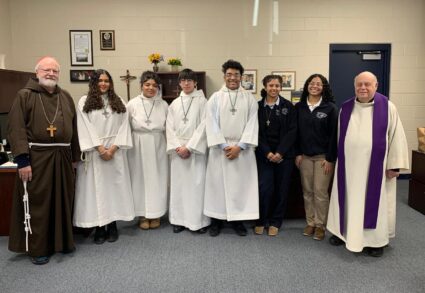
Notre Dame Cristo Rey, along with Cristo Rey Boston, is one of two Cristo Rey model high schools we have in the archdiocese. Under this model, students go to school four days a week and work at a local business one day a week. This not only gives them experience in the professional world, but their wages offset the cost of their education.
I was there at their founding, and when the Sisters of Notre Dame de Namur started this school, it was in Lawrence at the convent of St. Mary of the Assumption. I was worried about their prospects, because Lawrence is not a city that has many employment opportunities. But the sisters have done very well with it.
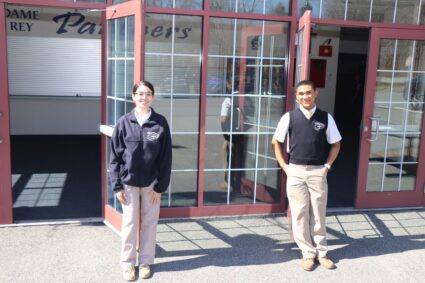
In the meantime, they have moved to a beautiful campus that was the venue of the Sisters of the Presentation of Mary’s school in Methuen. The pandemic, of course, was another challenge for the Cristo Rey format. But they came through it very well, and the school is thriving. They have about a 75 percent college graduation rate, which is extraordinary.
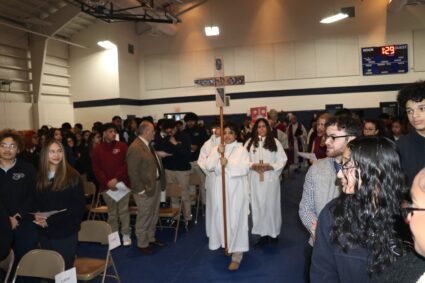
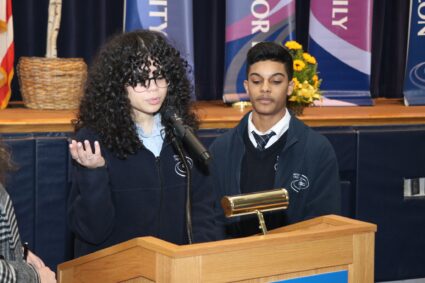
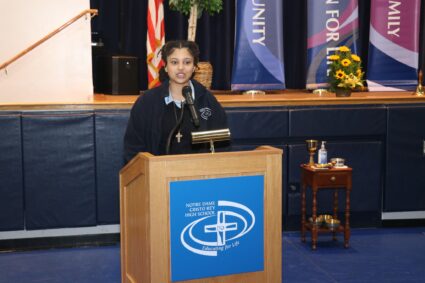
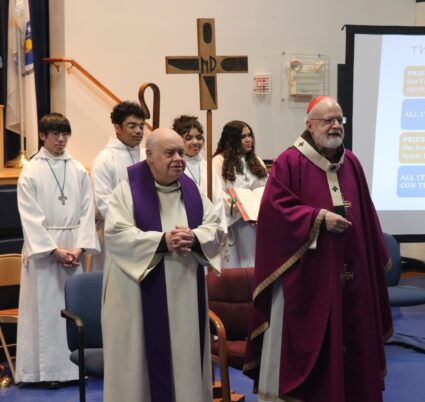
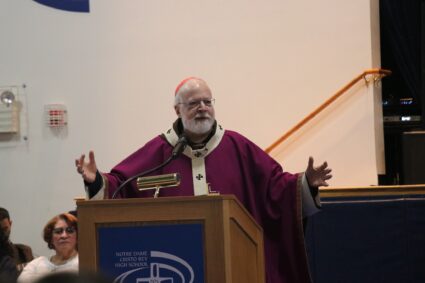
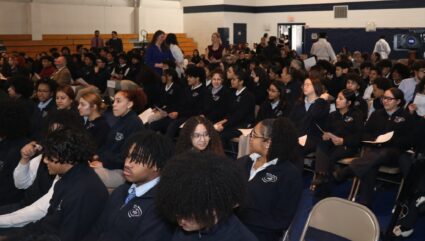
The school is very heavily Hispanic, and the Mass was done bilingually. The youngsters participated and sang beautifully. It really was a very joyful celebration.
Friday, I went to Pope St. John XXIII National Seminary in Weston to celebrate the institution of new acolytes. Pope John is a unique seminary in that it forms men from all over the country who come to the priesthood later in life.
At Pope John, they have the custom of celebrating the Friday liturgies in Spanish. This is something I applaud because I think it’s good for the seminarians to be exposed to liturgy in Spanish. That way, if they end up in a parish with a Hispanic community, they won’t be afraid to celebrate the Mass in Spanish, even if they are unable to preach in Spanish.
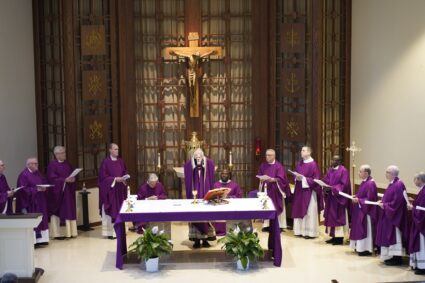
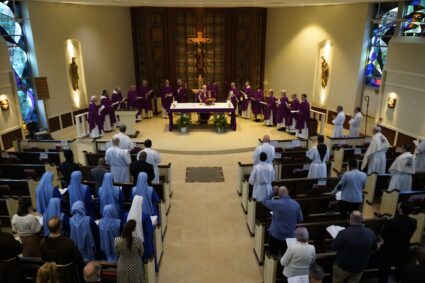
Those being instituted as acolytes were Joseph Bao Quoc Nguyen, Diocese of Venice; Brother Anthony Monahan, OFM, CAP, Capuchin Province of Mid-America; Maximilian Muenke, Archdiocese of Boston; Leonardo Espinosa-Lopez, Diocese of Raleigh; and Joseph Frank Kolcun, Diocese of Syracuse.
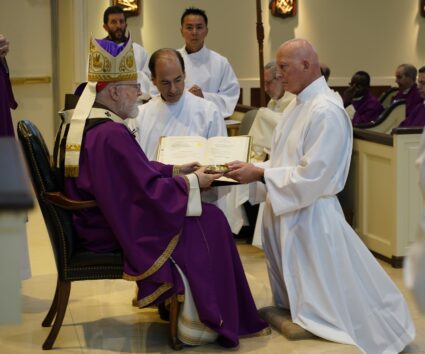
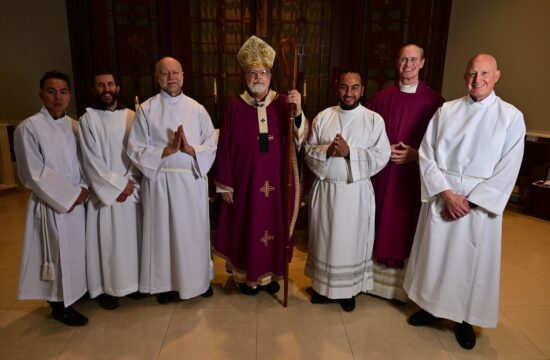 We were very happy that several seminary board members and Mother Olga and the Daughters of Mary of Nazareth were able to join us for the ceremony.
We were very happy that several seminary board members and Mother Olga and the Daughters of Mary of Nazareth were able to join us for the ceremony.
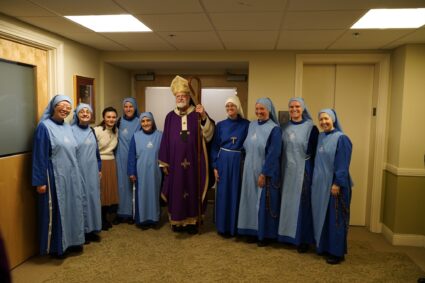
That day, the seminary was also holding a come-and-see retreat for those who might be considering a vocation. So, I had lunch with them, and then we had a question-and-answer session. There were 17 men there, which was a very hopeful sign of interest in the seminary.
Saturday, we had a meeting of our Survivors Advisory Board, which assists us in education, outreach and formation of leadership in the Church around issues of safeguarding.
They gave reports on the meetings that they’ve been having with priests, deacons and seminarians on safeguarding. They say the meetings have gone very well, and I’m very grateful for all the help they give us.
Sunday was, of course, St. Patrick’s Day, and we had a very festive Mass at the Cathedral of the Holy Cross.
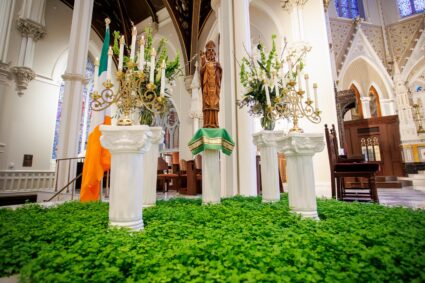
This year, St. Patrick’s Day was on a Sunday, so we celebrated the Mass of the Fifth Sunday of Lent. You cannot substitute another Mass for a Sunday Mass, but we made the celebration also in honor of St. Patrick because we knew many people would be coming to the cathedral precisely to celebrate our patronal feast.
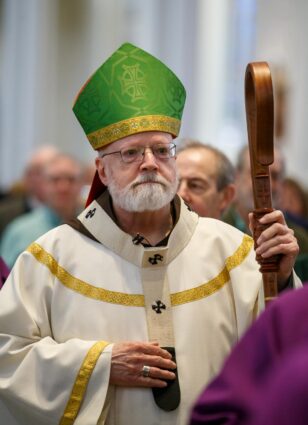
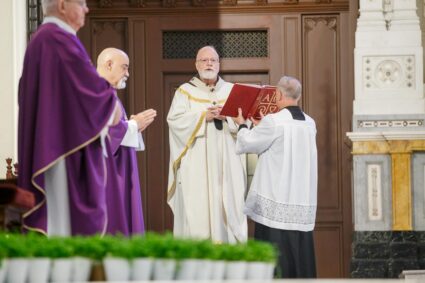
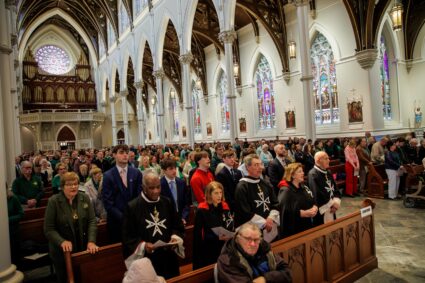
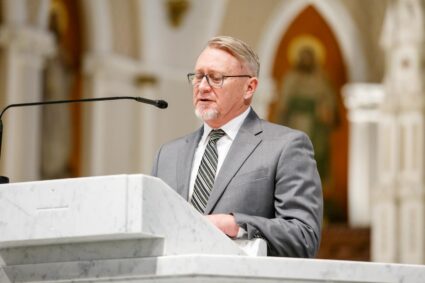
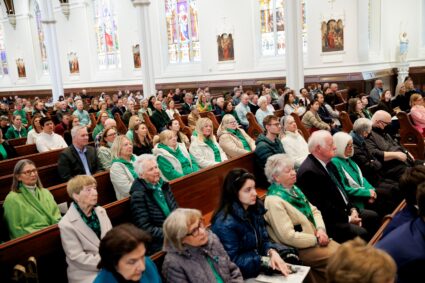
The choir sang many beautiful Irish hymns, and we were so pleased to be joined once again by Irish tenor Ciarán Nagle, who led several of the songs, particularly Our Lady of Knock, which I look forward to every year.
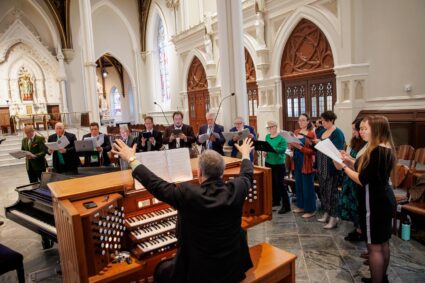
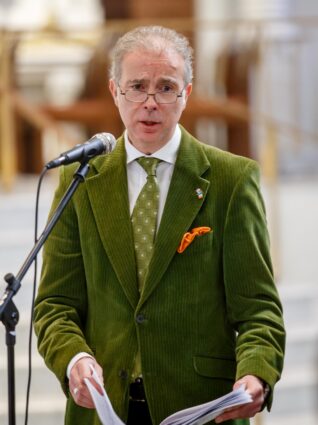
We were also very happy to have the students from the Catholic Memorial Irish Language Program deliver the petitions in Irish and English.
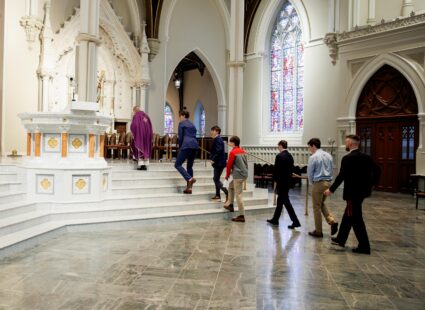
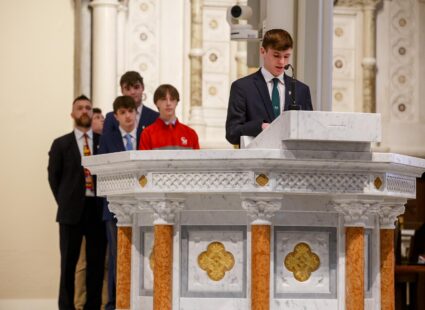
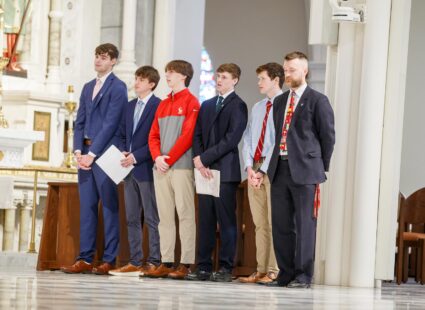
As always, we had the blessing of the shamrocks that are distributed to the people after Mass.
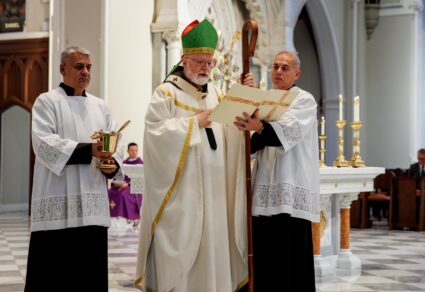
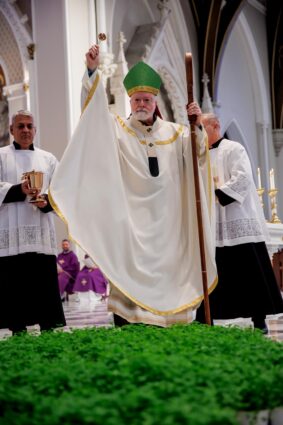
And Msgr. O’Leary had a reception in the lower hall for the people afterwards.
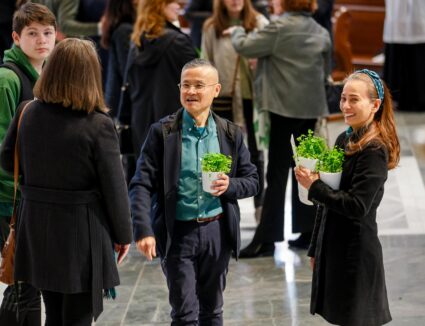
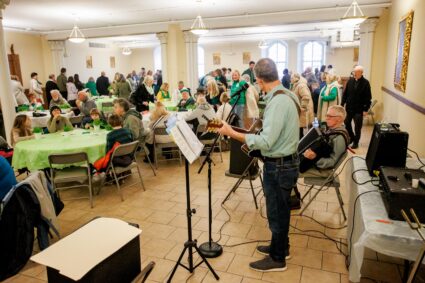
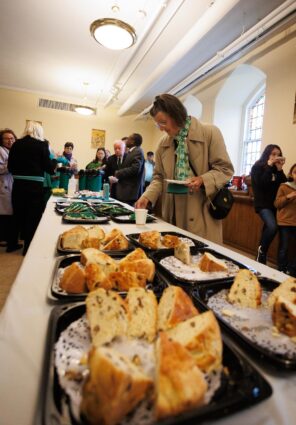
I took advantage of the feast day to talk about the history of the Irish people, particularly the way that so many Irish came to the States at the time of the famine. Over 1 million people starved to death, and others came on the famous coffin ships that would be followed by sharks because they were constantly throwing overboard the bodies of people who died of starvation.
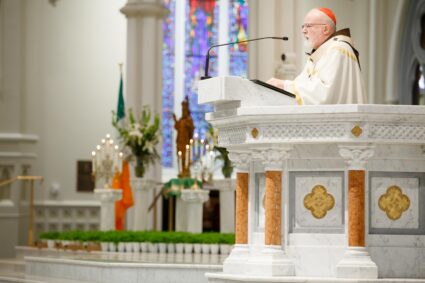
I said that my family came to Montréal and that many of the ships that came to Montréal were full of orphans because the parents had starved along the way from giving all their food to the children. I also noted that one year after the start of the famine, one-third of the population of Boston was made up of Irish Catholics who had come here fleeing starvation and the sufferings in Ireland. Many are buried in unmarked graves on Deer Island, at a site marked by a large Celtic cross. I also pointed out the fact that the first generation of Irish built our beautiful cathedral at a time when they were still sending money back to their starving relatives.
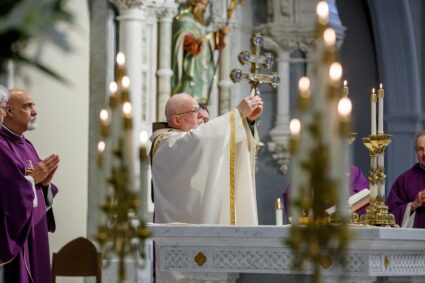
I raised all this to emphasize that the Irish people should be very sensitive to the situation in our world whenever there is hunger and starvation, and people are forced to leave their homes because of dreadful situations of oppression, poverty and discrimination.
Of course, there’s always a lot of kitsch that accompanies St. Patrick’s Day, and I received several very interesting gifts this year.



After the St. Patrick’s Day Mass, a woman came with her family to the rectory and said that I was her Spanish 101 teacher at Catholic University. That had to be over 50 years ago because she said her class is having their 50th reunion this year.
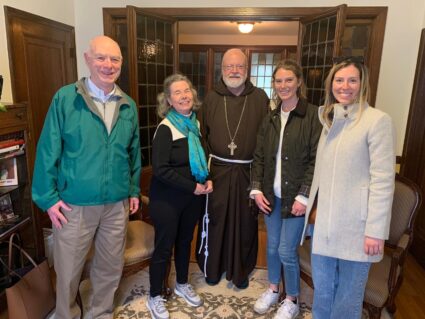
Monday, I went to Catholic University in Washington for a board meeting and for the dedication of the new nursing building on campus, which is just beautiful.
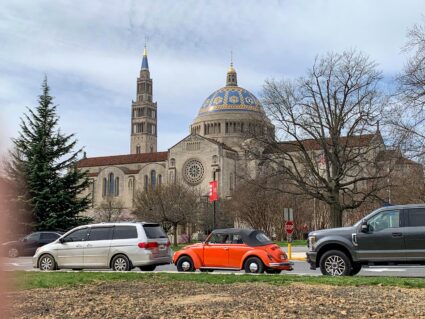
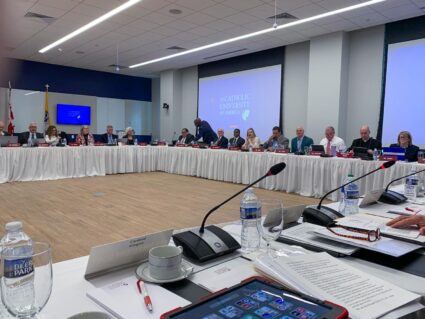
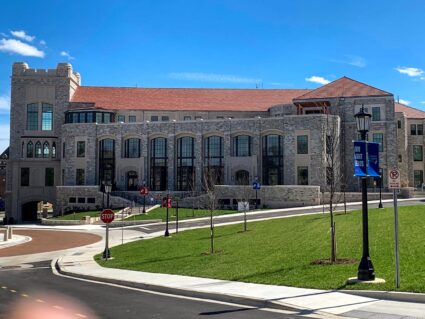
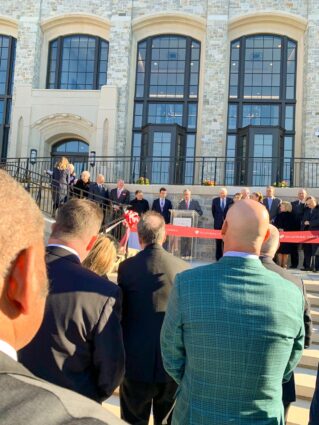
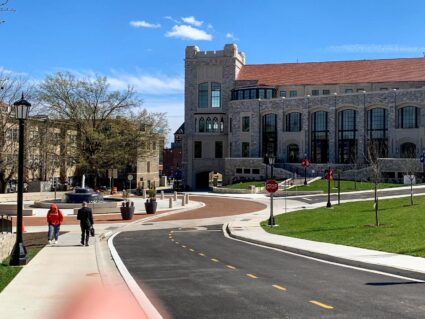
It was a wonderful time to be in Washington because the cherry blossoms were in full bloom.
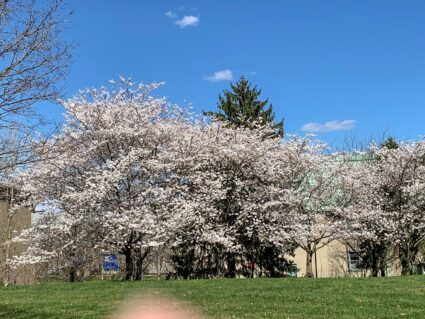
Then, on Wednesday, I went to Cardinal Spellman High School in Brockton for a celebration of their 65th anniversary. The school was founded by Cardinal Cushing, who named it in honor of Cardinal Spellman, who had been an auxiliary Bishop of Boston.
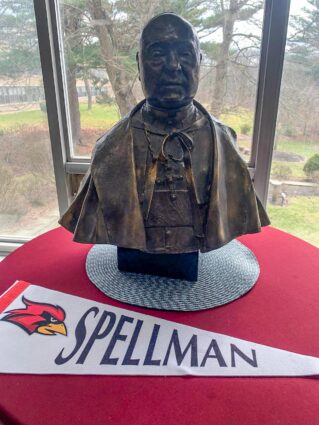
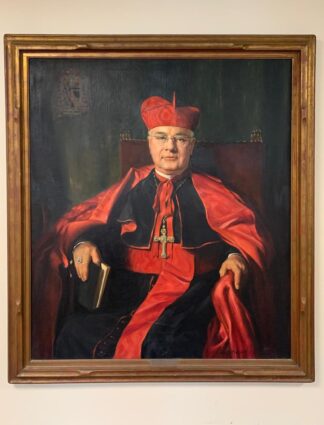
We were very happy to be joined by Father Paul Ring, who is an alumnus, School Chaplain Deacon Joe Nickley, Director of Campus Ministry Jason Deramo and, of course, School President Daniel Hodes.
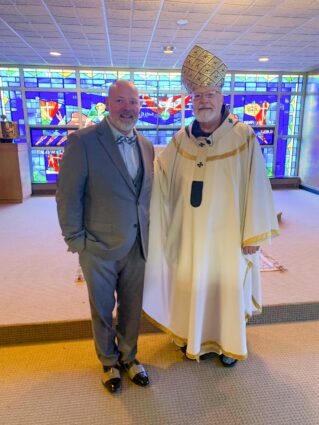
I was also pleased to meet the students involved in campus ministry, which they call the God Squad.
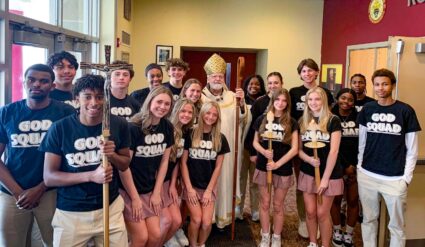
They have a nice picture of the God Squad with Bishop Dooher from several years ago hanging on the wall.
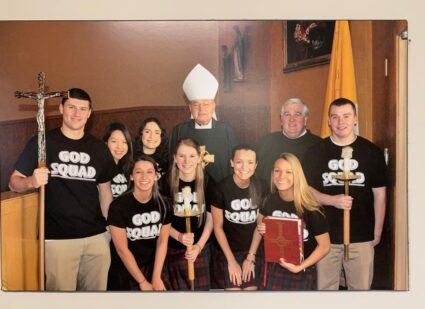
The Mass was celebrated in honor of St. Joseph because the school was originally run by the Sisters of St. Joseph. The chapel is also dedicated to St. Joseph and has a number of stained-glass windows dedicated to him.
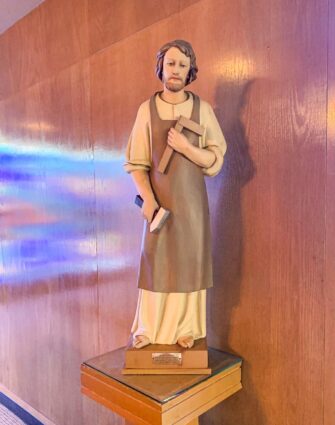
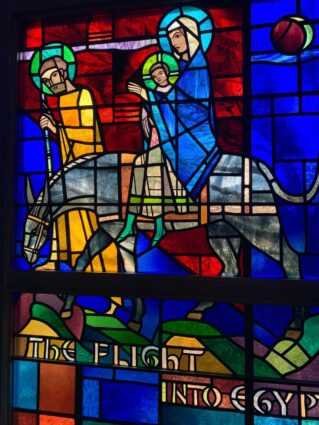
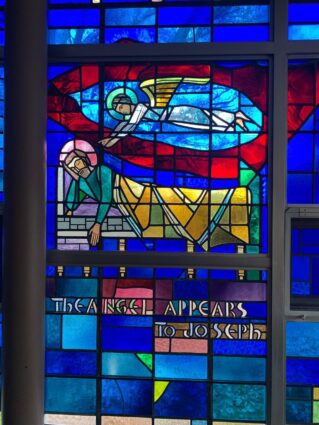
That evening, I had one of my regular dinners with a group of seminarians. 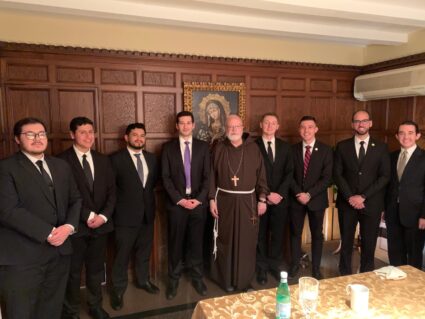
This time, I met with the men in their second year of pre-theology studies.
Yesterday, we had a meeting of our Presbyteral Council and, at the lunch afterwards, we bestowed the Cheverus Medal on Deacon Chris Conley, who was unavailable when we had the ceremony at the cathedral.
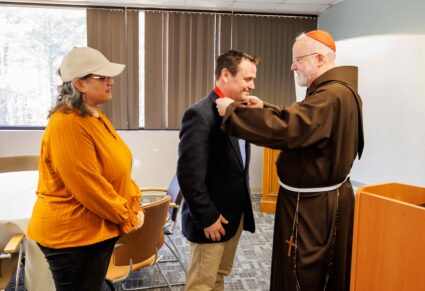
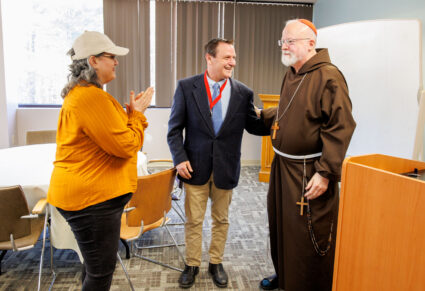
Joining us were Deacon Chris’s wife, Jen, and his father, Jim.
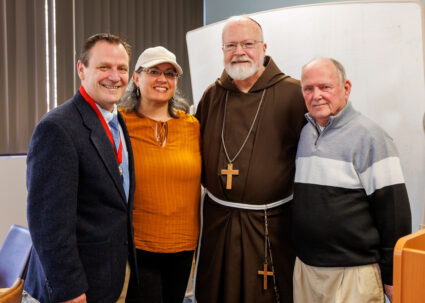
All the deacons who work in the Pastoral Center also came to show their support, as well.
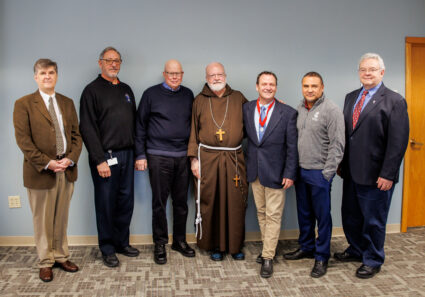
Finally, some of you may have read the news that the Holy Father has appointed a new secretary and Adjunct Secretary for the Pontifical Commission for the Protection of Minors.
Our new secretary is Bishop Luis Manuel Alí Herrera, an auxiliary Bishop of Bogotá who has served as Secretary General of the Colombian bishops’ conference.
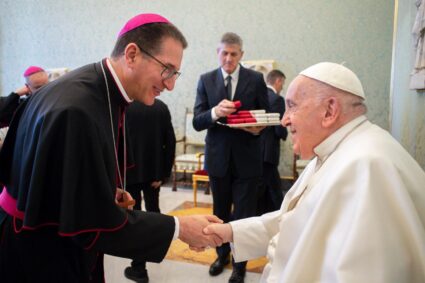
And our new adjunct secretary is Teresa Kettlekamp, a former colonel in the Illinois State Police who had been the director of the safeguarding office for the U.S. Conference of Catholic Bishops.
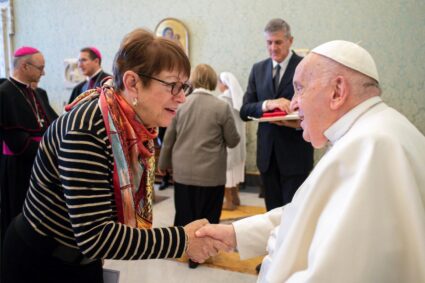
Both of them have been commission members, so I see this as a vote of confidence from the Holy Father in the commission’s work. We are very grateful for Oblate Father Andrew Small’s contributions to the commission and his willingness to work with the new secretary during this time of transition.
Until next week,
Cardinal Seán
